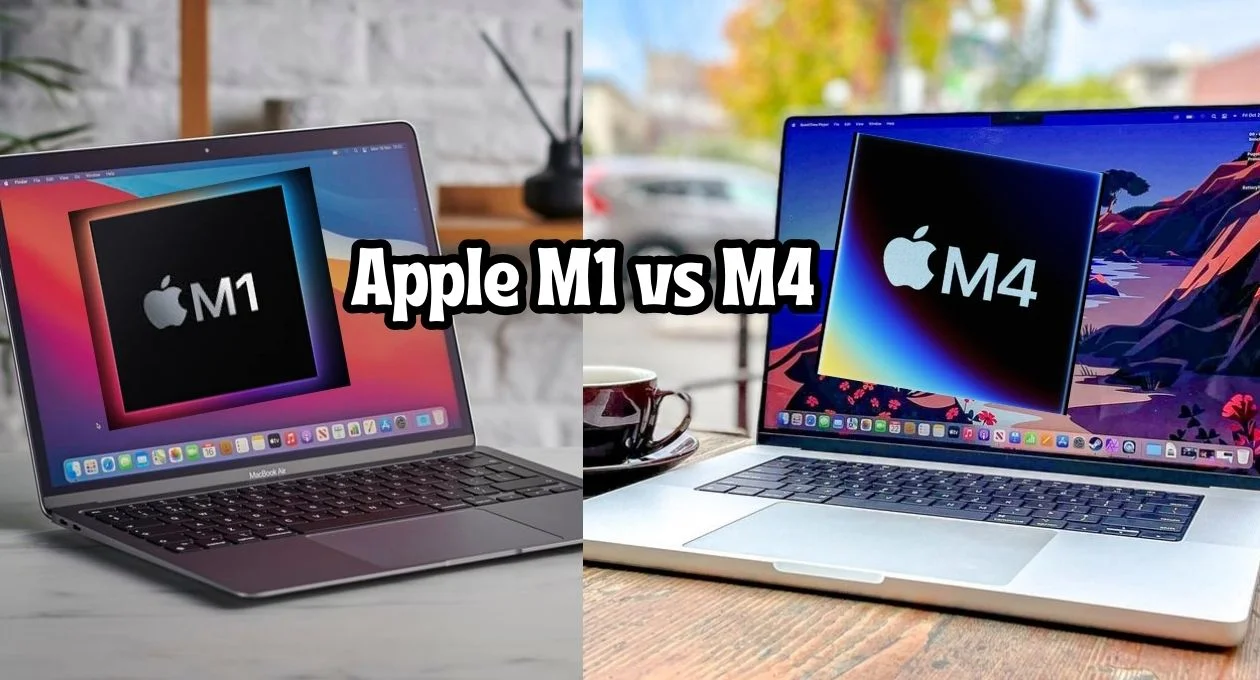The tech world is always buzzing with innovations, and Apple’s M-series chips have been at the forefront of this revolution.Apple m1 vs m4 introduced to marked a significant leap in computing technology by integrating CPU, GPU, and neural engine onto a single chip, delivering unparalleled speed and efficiency. From the groundbreaking M1 to the anticipated M4, Apple’s silicon chips have set new benchmarks in performance and efficiency. In this blog, we’ll delve into the differences between the Apple M1 and the upcoming M4, and explore various related topics to give you a thorough understanding of these powerful processors.
From the groundbreaking M1 to the anticipated M4, Apple’s silicon chips have set new benchmarks in performance and efficiency. Its successor, the M4, promises even more enhancements, likely building on the M1’s architecture with refined manufacturing processes and increased transistor counts. Expected improvements in machine learning capabilities and power efficiency could further extend battery life and performance in Apple’s latest devices. As with any leap in tech, the comparison between these giants underscores Apple’s continued commitment to innovation and user experience.
Apple M1 vs M4:
The Apple M1 chip marked a significant shift from Intel-based processors to Apple’s custom silicon. With its ARM-based architecture, the M1 brought impressive performance, energy efficiency, and seamless integration with macOS. On the other hand, the M4 chip, expected to be released soon, promises to build on the M1’s foundation, offering even more advancements in processing power, graphics capabilities, and AI performance.
Key Features of Apple M1
- 8-core CPU: High efficiency and performance cores
- 8-core GPU: Excellent graphics performance
- 16-core Neural Engine: Enhanced machine learning capabilities
- Unified Memory Architecture: Improved data access and speed
Expected Features of Apple M4
- Advanced Architecture: Likely featuring higher core counts
- Improved AI Capabilities: Better machine learning performance
- Enhanced Graphics: Superior GPU for gaming and creative tasks
- Greater Efficiency: Optimized power consumption
As the tech industry eagerly anticipates the M4, speculation abounds regarding its potential to revolutionize user experiences further. The M4 is expected to deliver multithreaded performance enhancements that could benefit video editing, 3D rendering, and other intensive tasks. Moreover, improvements in thermal management might result in quieter, cooler, and more efficient devices, making them ideal for both professional and everyday use. The M4’s expected backward compatibility with current M1 ecosystems will also ensure a smooth transition for users upgrading their hardware.
M1 iPad Pro vs M4 iPad Pro
The M1 iPad Pro has been a game-changer in the tablet market, providing desktop-level performance in a portable form factor. It features an 8-core CPU, an 8-core GPU, and a 16-core Neural Engine. With the M4 iPad Pro on the horizon, expectations are high. The M4 chip is anticipated to bring enhanced performance, improved graphics, and better energy efficiency, making the iPad Pro even more versatile for professional and creative tasks.
M1 iPad Pro
- Performance: Desktop-level performance in a tablet form
- Graphics: 8-core GPU for high-end graphics
- AI: 16-core Neural Engine for advanced machine learning tasks
- Battery Life: Efficient power usage for extended battery life
Anticipated M4 iPad Pro
- Enhanced Performance: Higher core counts and faster processing
- Superior Graphics: Advanced GPU capabilities
- Improved Efficiency: Better battery life and power management
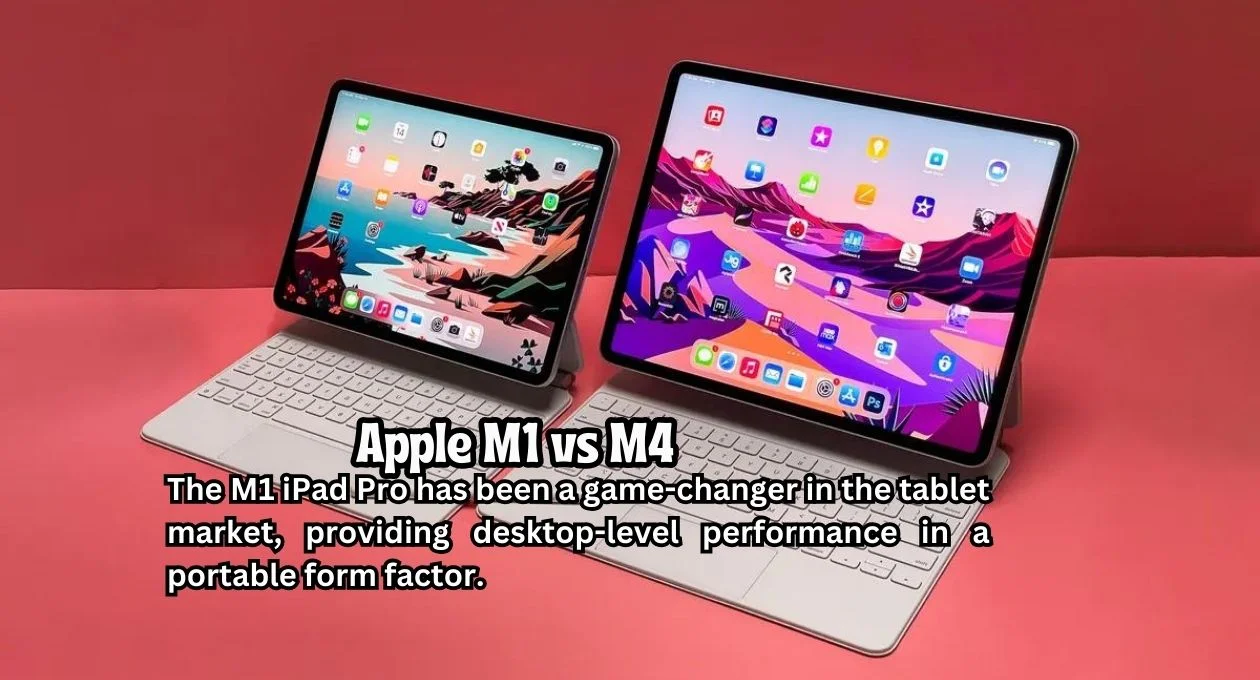
The forthcoming M4 iPad Pro is expected to push the boundaries of what a tablet can achieve, bringing professional-grade performance to more users. With expected enhancements in AI and machine learning, it will offer more intelligent and responsive applications, from creative tools to productivity software. This will allow artists, developers, and business professionals to leverage the power of Apple’s latest technology, promising a seamless experience across all tasks. As anticipation builds, the tech community eagerly awaits the transformational impact the M4 chip will undoubtedly have on the iPad Pro lineup.
Apple M4 vs M3
While the M3 chip is yet to be released, it is expected to offer significant improvements over the M2. The M4, following the M3, will likely push the boundaries even further. The M4 is expected to feature a more advanced architecture, higher core counts, and better AI capabilities, making it a powerhouse for demanding applications.
Apple M3
- Incremental Improvement: Expected to offer better performance than M2
- Refined Architecture: Improved performance per watt and thermal management
Apple M4
- Major Leap: Significant performance enhancements over M3
- Higher Core Counts: More cores for better multitasking and processing
- Enhanced AI: Advanced neural engine for superior machine learning
The constant evolution of Apple’s silicon technology underscores the company’s dedication to pushing the envelope of what’s possible in personal computing. With each new iteration, from the M1 to the eagerly awaited M4, Apple aims to deliver not just incremental improvements, but transformative experiences that redefine productivity and creativity. Users can look forward to more fluid multitasking, sophisticated AI-driven functionalities, and energy-efficient designs that extend battery life without compromising performance. As we edge closer to the release of the M4, the anticipation grows for breakthroughs that once again set new industry standards.
iPad M1 Pro
The iPad M1 Pro has redefined what a tablet can do, offering a seamless experience for both productivity and creativity. With its M1 chip, it delivers exceptional performance, whether you’re editing videos, playing graphics-intensive games, or multitasking with ease. The M1 chip’s integration with iPadOS also ensures smooth and efficient performance across all apps.
Features
- M1 Chip: Delivers exceptional performance for productivity and creativity
- Graphics: 8-core GPU for gaming and graphic-intensive tasks
- AI: 16-core Neural Engine for seamless AI tasks
- Portability: Lightweight and portable, perfect for on-the-go use
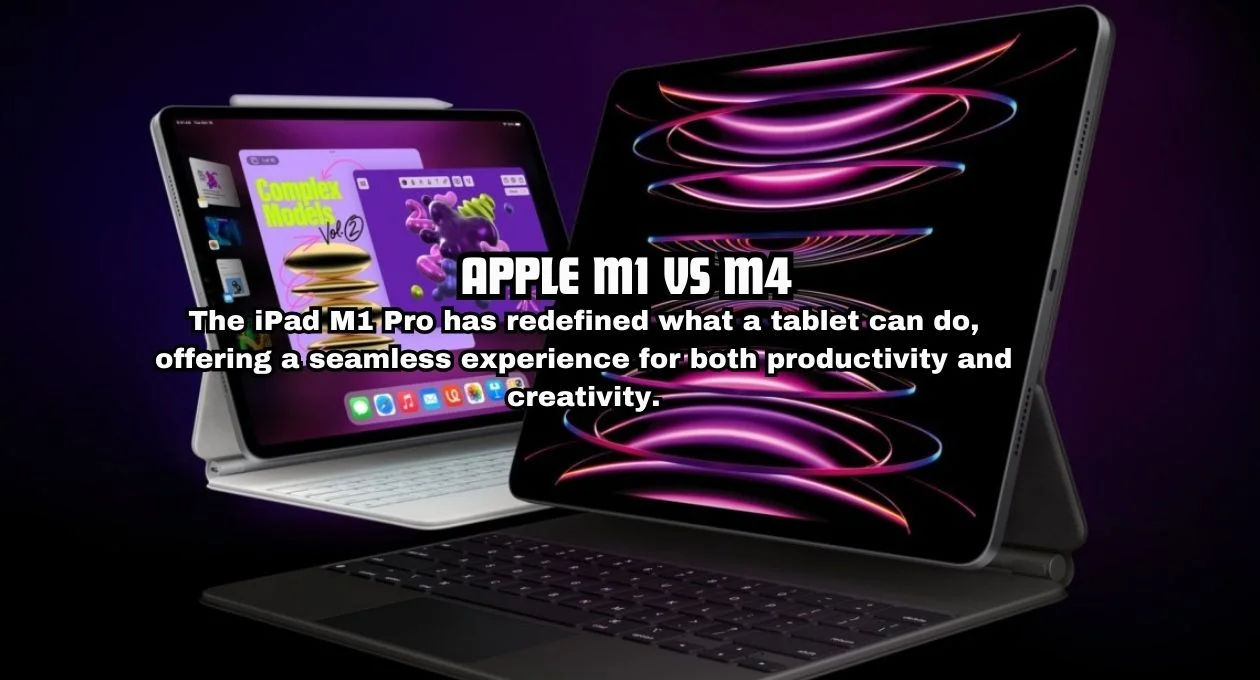
Considering the rapid advancements in technology, the M4 chip’s potential to enhance user experience across various applications is immense. From faster processing speeds and more powerful graphics rendering to seamless AI and machine learning, the M4 chip could revolutionize how we interact with our devices. This would not only benefit professionals in fields like video editing and 3D modeling but also elevate everyday tasks for general users.
Moreover, the anticipated improvements in energy efficiency and thermal management could make the M4-powered devices more reliable and comfortable to use. Extended battery life and quieter operation would contribute significantly to a more enjoyable user experience. As we look forward to the launch, there’s little doubt that the M4 will set a new benchmark in the world of personal computing.
Apple iPad Pro M1
The Apple iPad Pro M1 is a versatile device that bridges the gap between tablets and laptops. It boasts the same M1 chip found in the latest MacBooks, providing incredible speed and efficiency. The iPad Pro M1 is perfect for artists, designers, and professionals who need a powerful yet portable device for their work.
Key Features
- M1 Chip: Provides incredible speed and efficiency
- Performance: Ideal for professional and creative tasks
- Graphics: High-end GPU for excellent visual performance
- Battery Life: Efficient power usage for longer battery life
With its cutting-edge technology, the iPad Pro M1 continues to be a favorite among creative professionals and tech enthusiasts alike. The seamless integration of the M1 chip with iPadOS ensures that users experience top-tier performance whether they are sketching out designs, editing high-resolution videos, or engaging in intensive gaming sessions. The device’s lightweight design enhances portability, making it an ideal companion for on-the-go productivity. As users eagerly anticipate the next advancements with the M4, the M1 iPad Pro remains a testament to Apple’s commitment to innovation and excellence.
Apple M2 vs M3 Chip
The transition from M2 to M3 is expected to bring notable enhancements. The M3 chip is rumored to feature a more refined architecture, potentially offering better performance per watt, improved thermal management, and enhanced AI capabilities. This progression ensures that Apple’s devices continue to lead in performance and efficiency.
Apple M2
- Improved Performance: Over M1 with better power efficiency
- Enhanced Features: Better graphics and AI capabilities
Expected Apple M3
- Significant Enhancements: Better performance per watt
- Advanced Architecture: Improved thermal management and efficiency
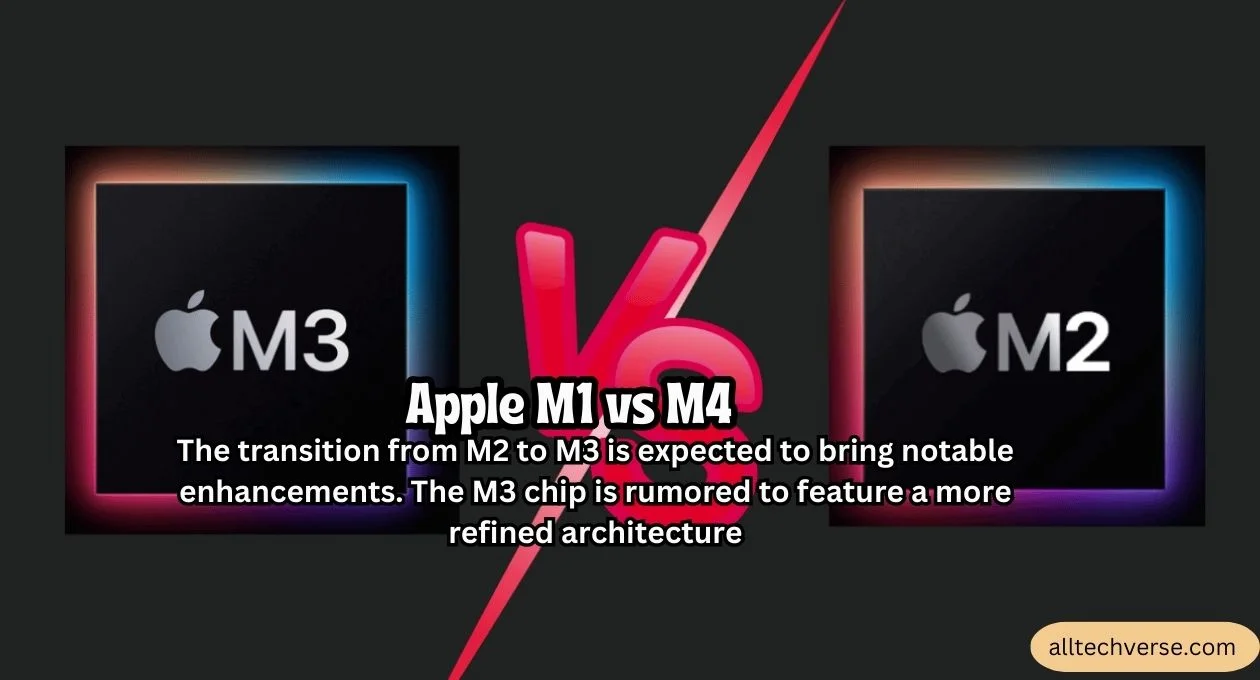
The Apple iPad Pro series continues to blur the lines between traditional computers and tablets, offering users an unparalleled blend of performance and versatility. Whether users are professionals requiring powerful tools for complex projects or everyday consumers seeking a reliable device, the iPad Pro meets these needs with ease. The latest advancements in Apple’s silicon chips only bolster the device’s capabilities, ensuring it remains at the forefront of personal computing technology. As anticipation grows for the upcoming M4 chip, the future looks exceedingly bright for Apple’s ever-evolving lineup.
Apple M4
The Apple M4 chip represents the future of Apple’s silicon. Building on the successes of its predecessors, the M4 is expected to deliver unprecedented performance, improved graphics, and advanced AI processing. This chip will likely power the next generation of MacBooks, iPads, and potentially other Apple devices.
Key Features
Future of Apple Silicon: Building on the successes of previous M-series chips
Enhanced Performance: More advanced architecture and higher core counts
AI and Graphics: Improved AI processing and superior graphics performance
The anticipated leap from the current generation to the M4 chip is set to redefine user expectations across all Apple devices. With its sophisticated architecture and optimizations, the M4 promises to enhance processing power and energy efficiency, enabling longer-lasting battery life and smoother performance for demanding tasks. This level of innovation ensures that professionals, creatives, and everyday users will benefit from faster load times, seamless multitasking, and immersive graphical experiences, further solidifying Apple’s lead in personal computing technology.
I Love MacBook
For many users, the phrase “I love MacBook” resonates deeply. Apple’s MacBooks, powered by the M-series chips, offer an unparalleled combination of performance, design, and user experience. The transition to Apple silicon has only strengthened this bond, with each new chip bringing more power and efficiency to these beloved laptops.
Reasons to Love MacBook
- Design: Sleek and premium build quality
- Performance: Exceptional speed and efficiency with M-series chips
- User Experience: Seamless integration with macOS and other Apple devices
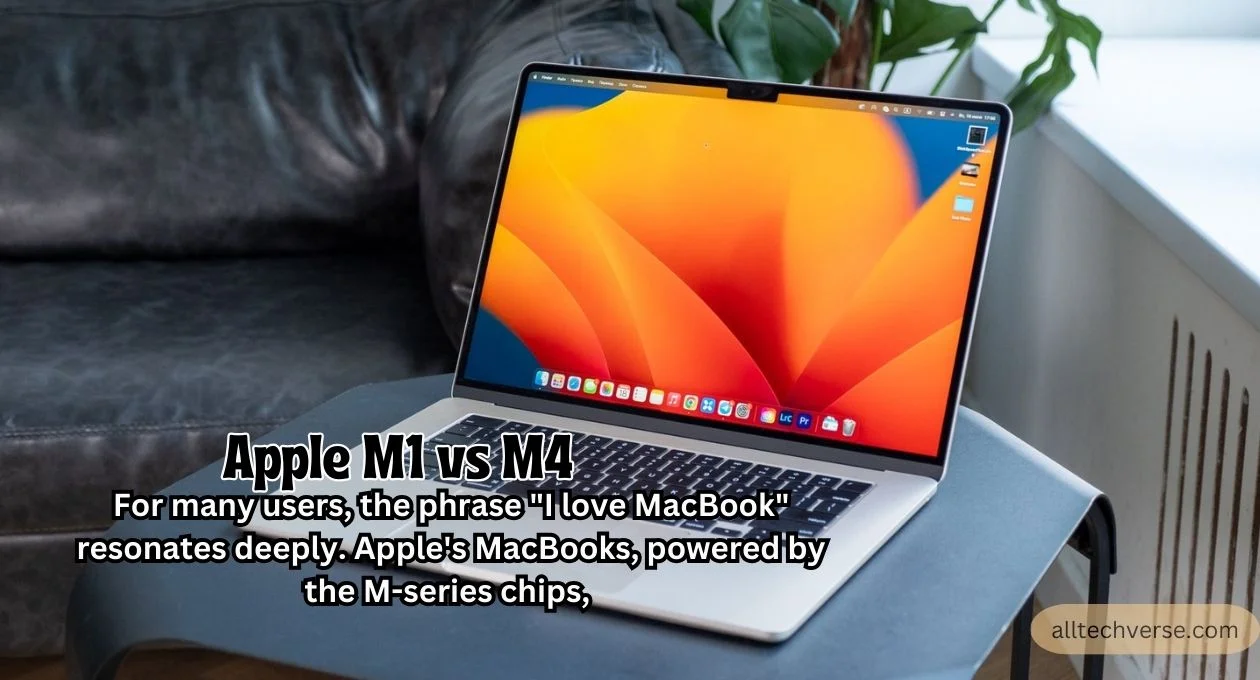
MacBooks also excel in their display quality, featuring high-resolution Retina displays that deliver stunning visuals with vivid colors and sharp details. This makes them ideal for tasks ranging from professional photo and video editing to casual movie watching and gaming.
M2 vs M3 vs M4
Comparing the M2, M3, and M4 chips highlights Apple’s commitment to continuous improvement. The M2 offers a solid upgrade over the M1, while the M3 is expected to introduce significant enhancements. The M4, however, is poised to be a game-changer, pushing the envelope in terms of performance, graphics, and AI capabilities.
Benchmark Insights
- Single-Core Performance: M3 expected to outperform M2
- Multi-Core Performance: Higher core counts and better multitasking in M3
- Graphics and AI: Improved performance in both areas for M3
- Performance: M4 to offer better CPU and GPU performance
- Efficiency: Enhanced power management and thermal performance in M4
- AI Capabilities: Advanced neural engine for superior machine learning
The continuous evolution of Apple’s silicon chips underscores the company’s relentless pursuit of excellence and innovation. By consistently pushing the boundaries of what their processors can achieve, Apple ensures that each generation of their devices offers new levels of performance, efficiency, and user experience. This unwavering commitment to advancement not only solidifies Apple’s position as a leader in the technology sector but also delights users who eagerly anticipate each new release, knowing that it will bring meaningful enhancements to their daily computing needs.
M3 vs M2 Benchmark
Benchmark comparisons between the M3 and M2 chips will provide insights into the performance gains achieved with the new architecture. Early benchmarks suggest that the M3 will offer substantial improvements in both single-core and multi-core performance, as well as better graphics and AI processing.
Benchmark Insights
- Single-Core Performance: M3 expected to outperform M2
- Multi-Core Performance: Higher core counts and better multitasking in M3
- Graphics and AI: Improved performance in both areas for M3
View this post on Instagram
Apple’s unwavering commitment to top-tier technology shines through with every chip iteration, fostering an ecosystem where each device not only complements but also enhances the user experience. As users transition from M1 to M2, and eagerly await the advancements in M3 and M4, the seamless integration, remarkable performance, and forward-thinking architecture of Apple’s silicon continue to set the industry standard, consistently exceeding expectations and reshaping what’s possible in personal computing.
Mac Mini CPU Benchmark
The Mac Mini, powered by the M1 chip, has already set impressive benchmarks. With the introduction of the M4 chip, the Mac Mini is expected to reach new heights in performance. Benchmarks will likely show significant improvements in processing power, graphics performance, and overall efficiency.
M1 Mac Mini
- Performance: Impressive benchmarks with M1 chip
- Efficiency: Excellent power management and thermal performance
Expected M4 Mac Mini
- Improved Benchmarks: Higher scores in CPU and GPU performance
- Better Efficiency: Optimized power usage and thermal management
The introduction of the M4 chip will likely redefine what users expect from Mac Mini devices, offering a seamless blend of power and efficiency that caters to both professional and casual users. The significant gains in CPU and GPU performance mean that even the most demanding applications and tasks can be handled with ease, while optimized power usage ensures extended use without overheating or compromising on speed. This advancement positions the Mac Mini as a versatile powerhouse, suitable for a wide range of computing needs.
FAQs
What are the benefits of Apple’s M-series chips?
Apple’s M-series chips offer several key benefits including exceptional performance, energy efficiency, and seamless integration with macOS and other Apple devices. These chips provide faster processing, improved graphics, enhanced AI capabilities, and longer battery life, making them ideal for both professional and everyday use.
How does the M4 chip compare to the M1, M2, and M3 chips?
The M4 chip is expected to surpass its predecessors in performance, graphics, and efficiency. While the M1 marked a significant leap from Intel-based systems, the M2 and M3 chips brought incremental enhancements. The M4 is anticipated to redefine user expectations with superior CPU and GPU performance, better power management, and advanced AI capabilities.
Why do people love MacBooks?
People love MacBooks for their sleek design, robust build quality, and unparalleled performance powered by the M-series chips. They offer a seamless user experience with macOS, excellent battery life, high-resolution Retina displays, and compatibility with a wide range of professional and creative tasks.
What can we expect from the M4 Mac Mini?
The M4 Mac Mini is expected to deliver significant improvements in processing power, graphics performance, and overall efficiency. It will likely handle demanding applications and tasks with ease, offering a balance of power and energy optimization suitable for both professional and casual users.
How does the M3 chip improve upon the M2?
Early benchmarks indicate that the M3 chip will offer substantial improvements over the M2, including better single-core and multi-core performance, improved graphics, and enhanced AI processing. These upgrades ensure faster performance and better multitasking capabilities.
Is the transition to Apple silicon worth it?
Yes, the transition to Apple silicon has proven to be highly beneficial. This shift has resulted in better performance, energy efficiency, and overall user experience. Each new generation of M-series chips continues to push the boundaries of what Apple devices can achieve, making the transition worthwhile for both professionals and everyday users.
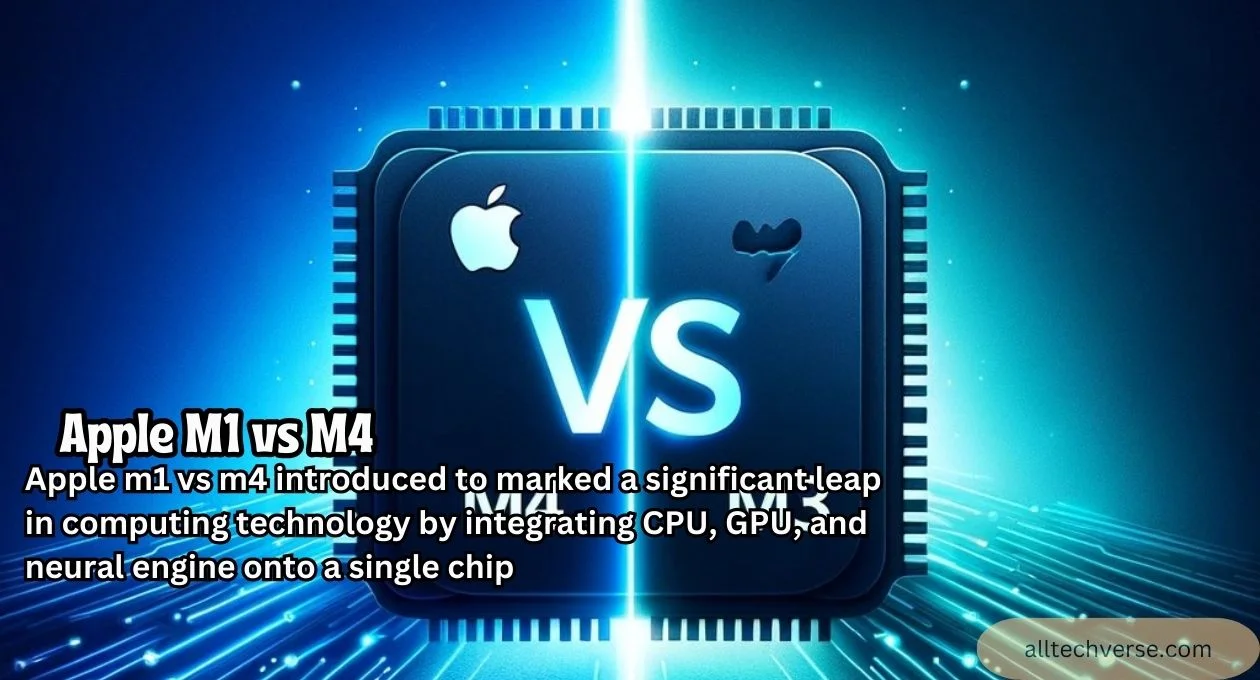
Conclusion
Apple m1 vs m4 introduced to marked a significant leap in computing technology by integrating CPU, GPU, and neural engine onto a single chip, delivering unparalleled speed and efficiency. Whether you’re using an iPad Pro, a MacBook, or a Mac Mini, the advancements in Apple’s silicon ensure that you have the power and efficiency needed for any task. As we look forward to the M4 and beyond, it’s clear that Apple’s commitment to innovation will continue to shape the future of technology.
By understanding the differences between the M1, M2, M3, and M4 chips, you can make an informed decision about which device best suits your needs. Whether you love your MacBook, rely on your iPad Pro, or are excited about the next generation of Apple silicon, there’s no denying that Apple’s M-series chips are revolutionizing the tech landscape.
For More Information Keep Visiting AllTechVerse.


